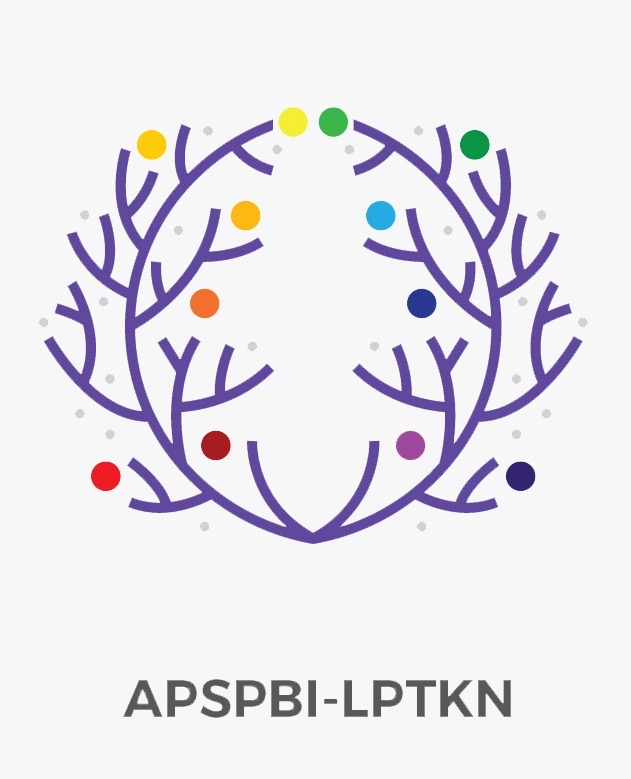AN ANALYSIS OF SYMBOLISM IN TENNESSEE WILLIAMS’ PLAY THE GLASS MENAGERIE
Keywords:
Drama, symbol, symbolism, Tennessee Williams, The Glass MenagerieAbstract
This research entitled “An Analysis of Symbolism in Tennessee Williams’ Play The Glass Menagerie†aims at understanding the meaning of each symbol in the play. The data of this research were obtained from the script of the play as the primary data and the secondary data were gained from several references from books and articles to support the analysis. The method of analyzing the data used was objective approach focusing on the intrinsic element of the play. Based on the discussion, the writer concludes that the symbols in this play are implied within three elements, they are (1) Symbol in the characters, where several objects are employed to symbolize and emphasize the characteristics and certain idea of the character in the play. Here several objects such as the glass menagerie, Victrola, blue roses and the glass unicorn represent the characteristic and certain idea within Laura Wingfield, meanwhile certain characteristic and theme in Tom Wingfield are represented through a fire escape, movies, merchant marine, and some other symbols attached to him. Certain objects also significantly become the symbol for certain idea in the other characters. (2) Symbol in the action of the character, where the actions of the character in this play symbolically imply certain idea to emphasize and clarify the story of the play. (3) Symbol in the background and setting, where certain place and moment are presented as the symbol for certain idea and issue in this play.
Downloads
References
Abrams, M. H. (1999). A Glossary of Literary Terms. Heinle & Heinle.
Abrar, M. (2018). A Critical Evaluation of Qualitative Reports and Their Contributions to Educational Research. PAROLE: Journal of Linguistics and Education, 6(2), 13. https://doi.org/10.14710/parole.v7i1.13-22
Arikunto, S. (2006). Qualitative Research Methodology. In Kementerian Pendidikan Dan Kebudayaan. Bumi Aksara.
Barnard, D. B. (2007). The symbolism of tennessee williams’ The Glass Menagerie: An Inductive Approach (Doctoral Dissertation). https://shsudramaturgy2015newcomb.files.wordpress.com/2015/06/the-symbolism-of-tennessee-william_s-the-glass-menagerie-an-inductive-approach-barnard_dis.pdf
Daniel, J. (2013). The world of illusion in Tennessee William’s “ The Glass Menagerie .†International Journal of Innovative Research in Science, Engineering and Technology, 2(11), 6183–6185.
Dugošija, T. (2023). The Conflict between Reality and Illusion in Tennessee Williams’ the glass menagerie. 57, 651–657.
Egmir, E., Erdem, C., & Kocyigit, M. (2017). Trends in Educational Research: A Content Analysis of the Studies Published in International Journal of Instruction. International Journal of Instruction, 10(3), 277–294. https://doi.org/10.12973/iji.2017.10318a
Fadaee, E. (2011). Symbols, metaphors and similes in literature: A case study of “Animal Farm.†Journal of English and Literature, 2(2), 19–27.
Guan, Y., Jia, L., & Gao, Y. (2016). Fragile as Escaping into the Glass World-Analysis of The Glass Menagerie from the Perspective of Cognitive Domains. Advances in Literary Study, 04(04), 67–76. https://doi.org/10.4236/als.2016.44011
Indumathi, V., & Umamaheswari, D. (2018). Sensitive Of Women Empowerment in The Glass Menagerie By Tennessee Williams. Scope International Journal of Science, Humanities, Management and Technology., 4(3), 145–151.
Jadhao, N. G. (2012). The Theme of Loneliness and Alienation In Tennessee Williams’ “The Glass Menagerie.†Vidyabharati International Interdisciplinary Research Journal, 1(2), 55–60.
Minderop, A. (2010). Psychology of literature: Literary Work , Method, Theory and Case Example. Yayasan Pustaka Obor Indonesia.
Mohammadzadeh, M. (2019). The Structural Analysis of Symbols in the Ashurayi Literature. International Journal of Advanced Studies in Humanities and Social Science, 8(2), 209–222. https://doi.org/10.33945/sami/ijashss.2019.2.9
Nalliveettil, G. M., & Gadallah, M. S. M. (2016). Discourse Analysis of Tennessee Williams’ The Glass Menagerie. Advances in Language and Literary Studies, 7(3). https://doi.org/10.7575/aiac.alls.v.7n.3p.201
Qadri, G. (2017). Theories on Symbolism. AGU International Journal of Research in Social Sciences & Humanities, 5, 729–731.
Sandamali, K. P. S. (2015). Symbolism In Ernest Hemingway’s The Old Man And The Sea. International Journal of Scientific and Technology Research, 4(12), 125–129.
Sharma, L. S. (2014). Concept of Morality in Tennessee Williams’ The Glass Menagerie and A Streetcar Named Desire. International Journal on Studies in English Language and Literature, 2(9), 114–117. www.arcjournals.org
Singh, B. (2015). The Shift from Illusion to Reality in Tennessee Williams’ The Glass Menagerie. MIT International Journal of English Language & Literature, 2(1), 67–70.
Subashi, E. (2020). Myths and Symbols in Tennessee Williams ’ s Drama. Turkophone, 7(1), 28–36. https://dergipark.org.tr/en/pub/turkophone/issue/56326/778479%0A
Vaismoradi, M., Jones, J., Turunen, H., & Snelgrove, S. (2016). Theme development in qualitative content analysis and thematic analysis. Journal of Nursing Education and Practice, 6(5). https://doi.org/10.5430/jnep.v6n5p100
Zhang, Q. (2016). The Application Of Symbolism To Represent Jane’s Life Status In Jane Eyre. International Journal of Arts and Commerce, 5(2), 8–13.
Downloads
Published
How to Cite
Issue
Section
License
Copyright (c) 2024 Journal of English Language and Literature Teaching

This work is licensed under a Creative Commons Attribution-ShareAlike 4.0 International License.













